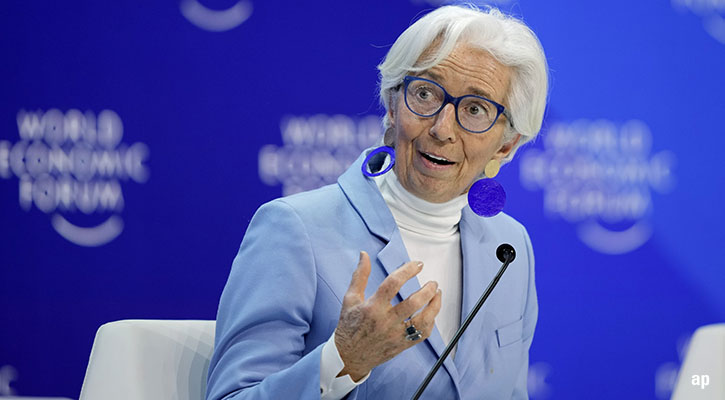Harry Markopolos, the well-known forensic accountant who warned securities regulators about the Madoff investment scheme, posted a 175 page missive on Aug. 15, 2019 likening General Electric to Enron. Mr. Markopolos’ prose oscillated from mostly hyperbole to occasionally insightful. As we’ve done our own analysis, we respectfully disagree with Markopolos’ general conclusion that GE is a fraud. However, Markopolos is exactly right regarding the opacity of GE’s financial statements; new management has improved the firm’s filings, but GE still has a long way to go in this disregard. Markopolos’ main points of contentions are: 1) GE’s insurance obligations are woefully under-reserved and it has been lying to the Kansas Insurance Department; 2) GE shouldn’t have consolidated BHGE’s financial statements, which are a source of confusion; and 3) GE’s evolving presentation makes it very difficult to evaluate GE’s operating performance.
We agree with Markopolos that GE is under-reserved in terms of its insurance obligations but point out that investors still should analyze the statutory reserve requirements separately from the GAAP insurance requirements. In contrast to consensus practices, we’ve already been modeling in a large $4.4 billion earnings charge in 2021. Following our latest model review, we now model 2021 adjusted EPS of 46 cents a share (higher than before due to timing) versus 91 cents of consensus. Our main gripe, which we’ve communicated to GE representatives, is the selection of GE’s most recent discount rate during its annual GAAP loss recognition testing (just over 6%).
GE contends that it raised the discount rate (which brought down the amount of the stated insurance liability) because it shifted investment into different asset classes, like private equity, structured finance, and other higher-yield (but on balance, higher-risk instruments). The company maintains this mirrors the practice of other insurance peers. We disagree with this practice because it mirrors the over optimism seen in municipal pension funds (“we’ll just invest our way out of the hole” is not a long-term viable strategy). While we can’t predict single A bond yields, 6% strikes us as too aggressive and is akin to kicking the can down the road yet again. We model 4.2% once the new GAAP accounting standards kick in in 2021. As such, we have no quarrel with Markopolos’ conclusion here, albeit his estimate is materially greater than ours of $4.4 billion versus his $10.5 billion calculation. We point out that these assumptions can oscillate and figures may vary considerably.
The more disconcerting item that stood out most to us was Markopolos’ contention that GE was lying to regulators and was guilty of committing outright fraud, which requires willful intent. From our understanding, Markopolos came to this conclusion after reading insurance filings from eight of GE’s largest long-term care reinsurance counterparties, which by his estimate account for over 95% of GE’s exposure to this highly risky product. Markopolos paid to use the National Association of Insurance Commissioners and AM Best Databases to review statutory financial statement and state insurance commission filings. By contrast, we relied on GE’s public filings with the SEC, as well as other third-party studies.
The insurance analysis would be long and complicated even for an actuary. Markopolos uses several tests to conclude that the Kansas Insurance Department, or KID, will require GE to pay significantly more than the $15 billion it initially assessed against GE. To recap, GE negotiated with KID to pay this amount over seven years. The latest statutory cash flow test reduced the aggregate amount to $14.5 billion, of which $9.1 billion is remaining (GE paid $3.5 billion in 2018, and $1.9 billion earlier this year). Several factors went into this analysis including discount rates based on the yield curve as well as morbidity assumptions.
Insurance experts are mixed as to whether the $14.5 billion will plug the hole. Adjustments to these reserves are nothing new, as many insurance companies underestimated the cost of long-term care. However, the amount of GE’s charge in the fourth quarter of 2017 was by far the single largest in the industry based on third party research. China Life Insurance, for instance, changed its loss reserve estimate six times for an aggregate impact on pretax income of about $5.7 billion. GE’s single charge was $9.5 billion on a pretax basis.
Looking forward, we did our own analysis in the form of Fermi analysis to estimate the level GE is under-reserved on a statutory basis. This is a much more difficult problem, since presumably GE’s regulator, KID would be in the best position to hold GE accountable. That said, we believe the level of potential underfunded-ness is magnitudes smaller than Markopolos’ conclusion (we estimate $1.2 billion versus the Markopolos $18.5 billion assessment). We base our assessment on several factors, including some retirement and insurance figures available for public consumption, as well as GE’s figures disclosed in its own teach-in.
These variables include the amount of covered policyholders that will eventually require long-term care assistance, the cost of facilities like assisted living and nursing care, the average length of stay in each type of facilities, as well as the percent of policies with a lifetime benefit period, and so on We believe that any type of adjustment to the reserves is much smaller, and it prompts us to lower our fair value estimate by only 3% currently to $11.70 (from $12 previously). However, we caution investors that GE still remains a highly uncertain name, as underpinned by our very high uncertainty rating. These are known unknowns.
To quote Joseph Belth, professor emeritus of Indiana University, who has written extensively on long-term care policies, “I think it is impossible to know whether the $15 billion is enough.” However, one point we think is probable is the following: even if Markopolos is directionally right, we don’t believe GE would have to immediately make the $18.5 billion payment. We disagree with the amount, and we also disagree with the timing of potential payments in his best-case scenario. For that matter, we disagree with the individual payments he’s calculated for the statutory obligation.
We are less concerned about Markopolos’ other attacks (or at least we don’t believe there is heightened risk relative to our prior analysis). GE’s Baker Hughes (BHGE) presentation is confusing, and how it is accounted for doesn’t make analysis simple. However, the company has improved the presentation of its financials. Very few industrial conglomerates actually break out their segments by free cash flow. While we don’t agree with how much is allocated to GE’s corporate line, Markopolos’ analysis virtually ignores the supplemental GE provided in the second quarter of 2019. What matters going forward is industrial free cash flow, which does not account for BHGE’s dividend as it has in years past.
We believe industrial free cash flow is useful to determine how much money has at the firm level to service all its liabilities. GE’s industrial free cash flow totaled about $4.5 billion last year, with aviation and healthcare contributing $7.2 billion offset by Power’s $2.7 billion drain. We believe our GE valuation is justified if it can stem the cash burn from Power and keep its liabilities from GE Capital relatively under control. Indeed, we’ve committed the opposite problem of overestimating GE’s subprime mortgage exposure with WMC, and the company’s credibility was helped with an accurate reserve calculation.
Finally, while there are numbers which are hard to track and require a quarterly re-segmentation, we believe GE has valuable assets. We reiterate our general thesis that GE has valuable assets worth more than its liabilities, and our prior 5-star rating (from $6.90) from December of 2019 remains an all-out bet on CEO Larry Culp’s exceptional leadership abilities. GE raised its full-year 2019 guidance recently, even with the risks from the 737 Max which is now baked into the firm’s estimates. We point out that Culp added to his GE holdings both prior to and after Markopolos’ for an aggregate addition of $5 million. We also believe the reconstituted board cautiously helps our confidence in the numbers. Leslie Seidman, who used to head the Financial Accounting Standards Board, for instance, is chair of the Audit Committee.







.jpg)


:quality(80)/cloudfront-us-east-1.images.arcpublishing.com/morningstar/FGC25JIKZ5EATCXF265D56SZTE.jpg)












